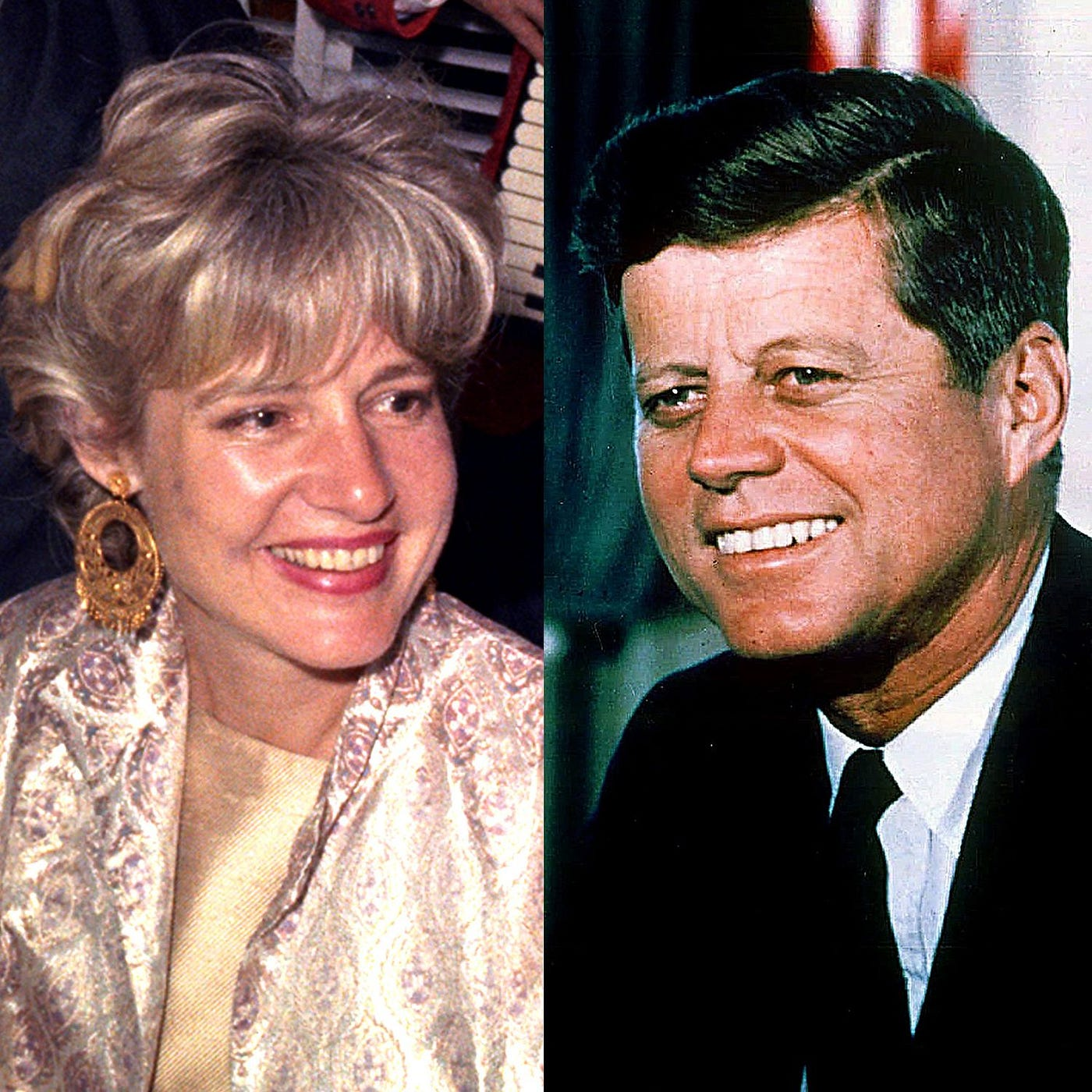Mary Pinchot Meyer’s Reflections on JFK Before Her Death
Mary Pinchot Meyer was not just another Washington socialite. Her life was marked by creativity, intellectual curiosity, and a willingness to challenge the status quo. While many knew her as a member of Washington’s elite circles, she was much more—a talented artist, a thoughtful critic of U.S. intelligence agencies, and a woman deeply engaged with the political and social currents of her time. Meyer’s life became intertwined with powerful figures, including a secretive affair with President John F. Kennedy, which sparked both intrigue and speculation. Yet, her life was tragically cut short in 1964, when she was murdered on a quiet Georgetown towpath, a case that remains unsolved and continues to captivate those seeking answers.
A Life Beyond the Surface
Mary Pinchot Meyer’s early years set the stage for a life of both creativity and activism. Born into a family committed to progressive ideals, she developed an appreciation for both the arts and intellectual pursuits. Her works as an artist reflected a belief in the transformative power of beauty, and she often used her voice to speak out against the rise of intelligence agencies and their unchecked power. Meyer was a rare figure, navigating Washington’s political landscape with ease while maintaining a critical perspective on the systems in place.
Her relationship with President Kennedy, though secretive, was more than a mere romance. Sources suggest that their discussions were not only personal but also intellectual, exploring ideas of world peace and the potential of psychedelics as a means of creating a new global consciousness. Though the details of their conversations remain unclear, many see her as a figure ahead of her time—an individual who merged personal connection with deep political insight.
The Tragic Night and Unsolved Mystery
In 1964, on a sunny day in Georgetown, Mary Pinchot Meyer was fatally shot while walking along a towpath. Eyewitnesses described the event as chillingly methodical—two shots to her head, a clear sign of an execution-style killing. The manner of her death suggested it was no random act of violence but a targeted attack designed to silence her. Investigators speculated that her murder was connected to her outspoken critiques of the U.S. intelligence agencies, particularly the CIA, and her potential knowledge of sensitive political matters. Despite efforts to uncover the truth, the case remains open, with the questions surrounding her death continuing to intrigue the public.
In the aftermath of her death, one of the most perplexing aspects of the case was the involvement of James Jesus Angleton, a CIA official. According to various accounts, Angleton allegedly entered Mary’s home shortly after her murder, searching for her personal diary, which has never been found. This diary is said to have contained private observations about the intelligence community, the Kennedy administration, and possibly, crucial details about events that may have led to the president’s assassination. The notion that a high-ranking CIA official would go to such lengths to retrieve it only deepened the mystery surrounding Meyer’s death.
The Mystery Deepens
The missing diary and the CIA’s involvement in the case have kept the theories surrounding Mary Pinchot Meyer’s life and death alive for decades. Researches, historians, and conspiracy theorists continue to examine the few pieces of evidence available, each new detail adding more layers to an already complex puzzle. The disappearance of her diary has led many to believe that Meyer was more than just a private citizen caught in the political web of her time. Her intellectual curiosity and potential knowledge about covert operations may have made her a target, someone whose ideas and writings threatened the powers that be.
Calls for a renewed investigation into her murder persist. Some believe that revisiting the case could bring new insights, especially with the increased focus on transparency and accountability within government agencies. Mary’s death, shrouded in ambiguity, reflects broader questions about the dangers faced by those who question authority in a system that values secrecy and control.
The Enduring Legacy
Mary Pinchot Meyer’s life and death challenge the traditional narratives of the time. She was an individual who blended intellectualism, activism, and art, refusing to conform to the roles society often imposed on women of her status. Her tragic murder raises important questions about power, secrecy, and the costs of dissent. Was she targeted because of what she knew or because of her willingness to speak out against the status quo? And if her writings contained explosive truths, why were they suppressed?
Meyer’s legacy continues to inspire those who value transparency and truth. Her life reminds us of the perils faced by individuals who dare to challenge powerful forces, whether political, social, or cultural. As we reflect on the unsolved mystery of her death, we are reminded of the price of seeking the truth in an age where some secrets remain buried beneath layers of intrigue and conspiracy.
Mary Pinchot Meyer’s story remains one of Washington’s most enduring mysteries, not only because of her tragic end but also because of the significant impact her life and ideas had on those who knew her. While the details of her death may never be fully understood, her life stands as a testament to the enduring power of questioning, creativity, and the pursuit of a better world.
